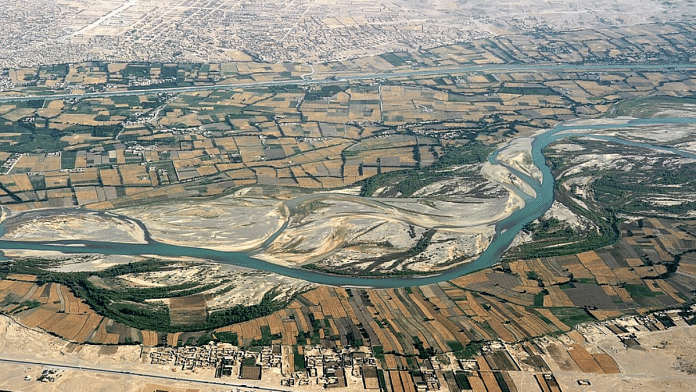New Delhi: With Afghanistan and Iran locked in a water dispute, tension between the two neighbours has escalated after two Iranian security personnel and a Taliban fighter were killed in a border clash Saturday.
The dispute is over the Helmand River, a critical source of drinking water, irrigation and fishing for both countries. While the two countries signed a treaty on sharing water resources in 1973, it was never ratified, leaving the Helmand’s waters a topic of dispute.
Earlier this month, Iranian President Ebrahim Raisi attacked the Taliban over possible violations of his country’s water rights. “We will not allow the rights of our people to be violated,” he said. Raisi also urged the Taliban to allow Iranian hydrologists to check the water levels of the river.
In response, the Taliban’s foreign minister, Amir Khan Muttaqi, said Iran should not ignore its drought conditions and ought to resolve the issue in “face-to-face talks instead of making noises”.
The situation has been on the boil ever since 2021 with the opening of the Kamal Khan Dam in Afghanistan’s Chahar Burjak district. While drought-ridden Iran says the dam is an environmental concern, Afghanistan argues that dams will secure water for it in line with the 1973 treaty.
“Afghanistan would no longer give free water to anyone, so Iran should provide fuel to Afghans in exchange for water,” then Afghan president Ashraf Ghani had said at the inauguration of the dam.
In July last year, Iranian Foreign Minister Hossein Amirabdollahian spoke to Muttaqi over the telephone and discussed Tehran’s rights to the Helmand’s waters.
Also Read: Why India’s Ujh dam & 2nd Sutlej-Beas link projects, key to Indus waters, have hit roadblock
What the 1973 Helmand treaty says
The Afghan-Iranian Helmand River Water Treaty of 1973 stipulates that Afghanistan must deliver water to Iran at a rate of 22 cubic metres per second per annum with an additional four cubic metres per second, thereby supplying an annual average of 820 million cubic metres under normal conditions.
The Helmand River originates in the Afghan Hindu Kush mountain range and flows across Afghanistan before it branches just near the border with Iran. It splits into the Shele Charak River that forms the border between the two countries, and the Sistan River which flows westward into Iran.
While the 1973 treaty ensures that Iran has access to the river, according to Article V, Afghanistan has complete ownership of the rest of the water supply.
“Afghanistan shall retain rights to the balance of the water of the Helmand River and may make such use or disposition of the water as it chooses,” Article V states, adding that Iran cannot make claims to any excess water, even if it “may be available in the Helmand lower delta and may be put to a beneficial use”.
The article says Afghanistan has absolute unilateral rights over the water supply of the river, giving it the authority over agricultural and hydroelectric projects and more. Kabul, however, must also ensure that the water is not polluted by industrial chemicals and does not become unsuitable for use in agriculture.
Barbs exchanged
On Saturday, Afghanistan’s Ministry of National Defense put up a tweet saying that “looking for excuses for war is not in the interest of either side”.
وضاحت!
متأسفانه چې نن ورځ یوځل بیا د افغانستان د نیمروز ولایت د کنګ ولسوالۍ اړوند سرحدي سیمو باندي ایرانی عسکرو له لوري ډزې پیل شوې او جګړه نښتې.
اسلامي امارت د هرې ستونزې لپاره خبرې اترې یوه معقوله لار ګڼي، منفي اقدامات او د جګړې لپاره بهانې لټول د یوه لوري په ګټه هم نه دي. pic.twitter.com/m79TYpzi8r— د ملي دفاع وزارت – وزارت دفاع ملی (@MoDAfghanistan2) May 27, 2023
According to local Afghan news reports, “the situation is under control” in the conflict zone in Iran’s Sistan and Baluchestan province.
“Local Iranian and Afghan officials have held negotiations on the cause of the clashes and agreed to continue their talks,” Alireza Marhamati, the deputy provincial governor of Sistan and Baluchestan province, said.
Iran is one of the few countries in the region that have maintained diplomatic relations with Kabul since the Taliban takeover in 2021, retaining its embassy in the country. Tehran, however, has not formally recognised the new Afghan government, though it has decided to engage with the Taliban.
(Edited by Tony Rai)



